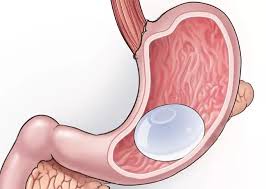Endoscopic Intragastric procedures are revolutionizing the field of weight loss and obesity management. Offering a minimally invasive approach, these procedures present a promising alternative to traditional weight loss surgeries. In this blog, we will explore how Endoscopic Intragastric techniques work, their benefits, and what you can expect if you decide to undergo this innovative procedure.
Understanding Endoscopic Intragastric Procedures
What is Endoscopic Intragastric?
Endoscopic Intragastric procedures involve the use of an endoscope, a flexible tube with a camera, to perform interventions inside the stomach without requiring large incisions. This approach allows for various treatments, including the placement of devices or injections that help manage weight and improve overall health.

How Does It Work?
During an Endoscopic Intragastric procedure, a thin, flexible tube is inserted through the mouth and into the stomach. The endoscope is equipped with a camera that provides real-time images of the stomach lining. Depending on the type of procedure, different tools and techniques are employed to achieve the desired outcome, such as placing an intragastric balloon or administering specific medications.
Benefits of Endoscopic Intragastric Procedures
Minimally Invasive Nature
One of the most significant advantages of Endoscopic Intragastric procedures is their minimally invasive nature. Unlike traditional weight loss surgeries, which require large incisions and longer recovery times, Endoscopic Intragastric techniques are performed through small openings. This results in less pain, quicker recovery, and minimal scarring.
Effective Weight Loss
Endoscopic Intragastric procedures have been shown to be effective in promoting weight loss. For instance, intragastric balloons can help reduce hunger and increase feelings of fullness, leading to decreased food intake and weight loss over time. Studies have demonstrated that patients undergoing these procedures often experience significant weight loss and improved overall health.
Shorter Recovery Time
Compared to traditional surgical options, recovery time following an Endoscopic Intragastric procedure is typically much shorter. Most patients can resume their normal activities within a few days, allowing them to return to their daily routines with minimal disruption.
Reduced Risk of Complications
The minimally invasive nature of Endoscopic Intragastric procedures also translates to a lower risk of complications. With smaller incisions and less trauma to the body, the chances of infection, bleeding, and other complications are significantly reduced.
Types of Endoscopic Intragastric Procedures
Intragastric Balloon
The intragastric balloon is one of the most common Endoscopic Intragastric procedures. This involves placing a deflated balloon into the stomach through an endoscope and then inflating it once it is in position. The balloon takes up space in the stomach, helping to induce a feeling of fullness and reduce appetite. This technique is generally recommended for individuals who are looking for a non-surgical option for weight management.
Endoscopic Sleeve Gastroplasty (ESG)
Endoscopic Sleeve Gastroplasty (ESG) is another advanced Endoscopic Intragastric technique. ESG involves using an endoscope to perform a series of sutures within the stomach, reducing its size and creating a sleeve-like structure. This procedure aims to limit food intake and promote weight loss by decreasing the stomach's capacity. ESG is often used for patients who are struggling with obesity and have not achieved their weight loss goals through other methods.
Endoscopic Gastric Plication
Endoscopic Gastric Plication is a similar approach to ESG, where the stomach is folded and stitched using endoscopic tools. This technique reduces the stomach's size and helps control hunger, leading to effective weight loss. As with other Endoscopic Intragastric procedures, Gastric Plication offers a less invasive alternative to traditional bariatric surgeries.
Preparing for an Endoscopic Intragastric Procedure
Initial Consultation
Before undergoing an Endoscopic Intragastric procedure, it is essential to have a thorough consultation with a healthcare professional. During this meeting, you will discuss your medical history, weight loss goals, and any potential risks or benefits associated with the procedure. This step ensures that you are well-informed and prepared for what to expect.
Pre-Procedure Requirements
Depending on the type of Endoscopic Intragastric procedure you choose, there may be specific pre-procedure requirements. This can include dietary modifications, medication adjustments, and pre-operative tests to ensure that you are in optimal health for the procedure.
Post-Procedure Care
After undergoing an Endoscopic Intragastric procedure, you will receive detailed instructions on post-procedure care. This includes dietary guidelines, activity restrictions, and follow-up appointments. Adhering to these guidelines is crucial for achieving the best possible results and ensuring a smooth recovery.
Expected Outcomes and Results
Weight Loss Progress
Patients who undergo Endoscopic Intragastric procedures often experience significant weight loss. However, the extent of weight loss can vary depending on individual factors such as adherence to dietary recommendations, lifestyle changes, and the specific procedure performed. Most individuals see noticeable results within a few months, with continued progress over time.
Improvement in Health Metrics
In addition to weight loss, many patients report improvements in health metrics such as blood pressure, cholesterol levels, and blood sugar control. Endoscopic Intragastric procedures can contribute to better overall health and a reduced risk of obesity-related conditions, including diabetes and cardiovascular diseases.
Long-Term Maintenance
Maintaining weight loss and achieving long-term success with Endoscopic Intragastric procedures often requires ongoing commitment to a healthy lifestyle. This includes regular exercise, balanced nutrition, and periodic follow-up appointments to monitor progress and address any concerns.
Conclusion
Endoscopic Intragastric procedures offer a transformative approach to weight management, providing a less invasive alternative to traditional surgeries. With benefits such as minimal scarring, reduced recovery time, and effective weight loss, these procedures present an appealing option for individuals seeking to improve their health and achieve their weight loss goals. By understanding how Endoscopic Intragastric techniques work, their benefits, and what to expect, you can make an informed decision about whether this innovative approach is right for you.

